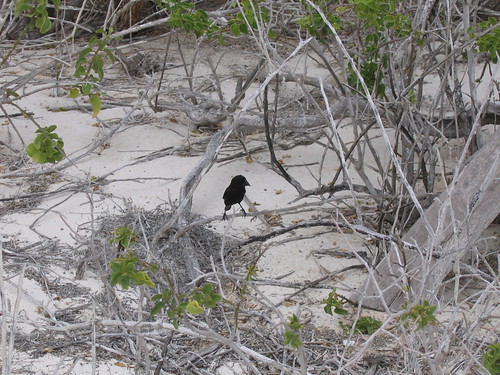It’s end-of-year list time. These weren’t all first published this year, and I daresay I’ve forgotten some, but they are at least all books I’d recommend. In no particular order:
Rembrandt’s Eyes by Simon Schama.
I blogged about this before. Simon is a serious historian (rather than, say, a journalist who writes occasional books) who writes brilliantly and is a firm believer in the virtues of a narrative approach to history. So I think he’s usually worth checking out. In this case I think he does a really good job telling the life of Rembrandt and establishing it in context. As a bonus, the book is full of gorgeous glossy plates of the paintings — it would almost be worth buying for the pictures alone.
Animals in Translation by Temple Grandin.
Another one I blogged about earlier. I’ll just quote some of what I said then: “Oliver Sacks fans will remember Temple Grandin as the autistic slaughterhouse designer in An Anthropologist on Mars. She has a particular affinity with animals and has used her talent for understanding them to help her design corrals, feedlots and slaughterhouses which are less stressful for the animals. The subtitle of Animals in Translation is ‘Using the Mysteries of Autism to Decode Animal Behavior’. Grandin uses her insights as an autistic person to help explain how animals behave and in the process explores the nature of autism itself.”
A Social History of English Cricket by Derek Birley.
The title is an accurate description of the book. On the basis that everything people do is shaped by their times, I guess you could write a social history of English anything – theatre, banking, food – and there would be plenty of subject matter. But cricket does seem especially appropriate, and not just because it’s a stereotypically English pursuit.
The reason cricket neatly brings out some of the tensions in English society is that cricket was the one sport that attempted to combine amateurs and professionals. Of the other English sports, football quickly became a commercial activity, played and watched by mainly working-class men in professional leagues dominated by the great industrial cities. Rugby split into two sports: Rugby League (professional, working class) and Rugby Union (amateur, middle class). But cricket rose to prominence in the gambling culture of the C18th with aristocrats fielding teams against each other for high stakes, and the teams would include talented men from their estates or the local villages – grooms and blacksmiths and so on – who were paid to play. So from the beginning there was a culture of gentlemen amateurs and working class pros in the same team. Given the class-riddled state of English society for most of the past 250 years, a staggering amount of hypocrisy and doublethink was the result.
Grayson Perry: Portrait of the Artist as a Young Girl by Wendy Jones.
The memoirs of the Turner Prize winning potter. I blogged about this before here and here.
Lorca: A Dream of Life by Leslie Stainton.
A well-written biography of an interesting man I didn’t know much about before. Being a gay socialist modernist poet from one of the most conservative regions of Spain in the 1920s and 30s didn’t exactly make Lorca’s life easy. But it does make for an involving story. The poetry was interesting too, though it’s the kind of work that leaves you wondering how much you’re missing in translation.
The River Cottage Meat Book by Hugh Fearnley-Whittingstall.
A book about cooking meat which combines practical information — the various cuts, how to choose the best meat and the underlying principles of different cooking methods — with information about different meat production methods and labelling schemes and a thoughtful consideration of the ethical aspects of buying and eating meat. And indeed a lot of recipes and a list of high-quality meat suppliers. A rare example of a food book which manages to be much more than just a list of recipes.
And finally, a book which I didn’t buy or read for the first time this year but deserves a plug – the Collins Bird Guide (to the birds of Britain and Europe) by Lars Svensson, Peter J. Grant, Killian Mullarney and Dan Zetterstrom. I’ve had the book for a bit, but I was struck again by how good it is when I was in Spain this year. You never quite know how good a field guide is until you use it, and this one seems to consistently provide the right information to allow you identify the bird you’re looking at. The illustrations are excellent and the text is thorough and lucid. I’ve used plenty of different field guides over the years, of insects and flowers and birds from different parts of the world. This is certainly the best of them.
